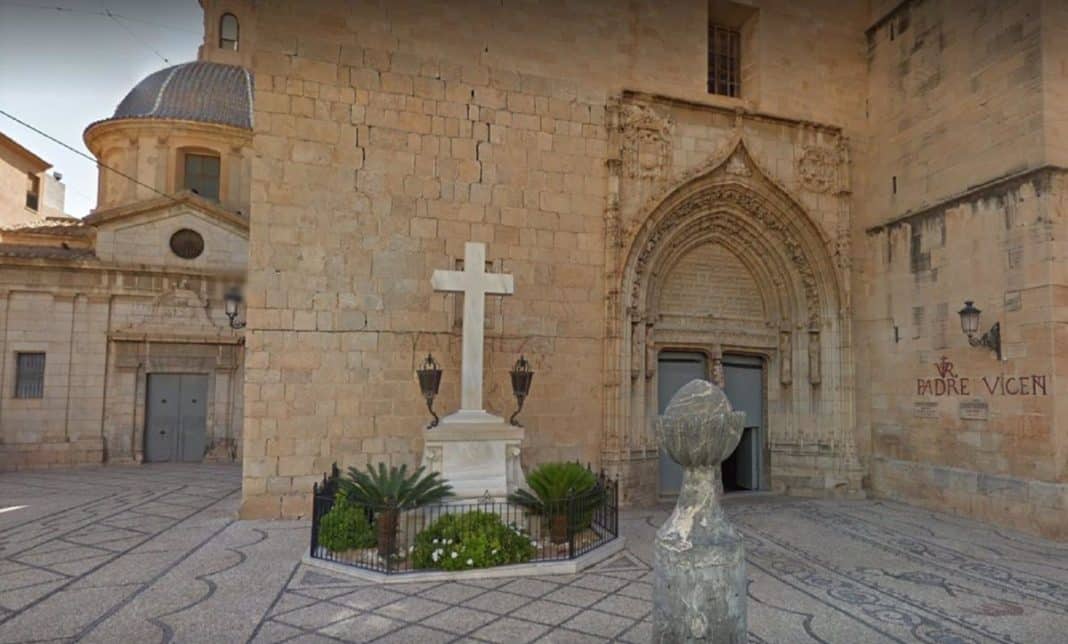A court in Orihuela has ruled that the Church owns the Cross of Callosa de Segura but not the portion of the square where the monument was located.
The court has recognised the San Martín Obispo Parish as the property of the Cross of Callosa de Segura -which was withdrawn by the local council in 2018 in application of the Historical Memory Law- but not of the space enclosed by railings at the doors of the temple, in the Plaza de España, where the monument was located.
The ruling thus partially upholds the claim filed by the Church, solely in relation to the ownership of the sculpture, and rejects the plaintiffs’ claim that the council refrain from not hindering the relocation of the property to its place of origin.
The San Martín Obispo Parish claimed in its lawsuit that its property right over the cross be recognised, as well as over the 29-square-metre plot of urban land on which it was attached.
Likewise, the plaintiffs requested that the council refrain “from any act that disturbs the peaceful possession of the property” and its “location”.
The magistrate considers it accredited that the plaintiff has owned the cross, built in 1942, as personal property, since at least 1978 and until its withdrawal in 2018, “in a peaceful, public and uninterrupted manner.” “This possession has been carried out as the owner, so the action must prosper in that sense,” she says.
On the other hand, the judge has determined that said property is not accredited with respect to the 29-square-metre space of the Plaza de España where the sculpture was located, given that the whole of that square is for public use by the residents and that the portion claimed does not make up an immovable property with the cross.
For this reason, it recognizes the right to ownership of the parish cross, “without prejudice in this case to the limitations or conditions that the applicable legislation in administrative proceedings and in the Contentious-Administrative Jurisdictional Order establish in this regard.”





